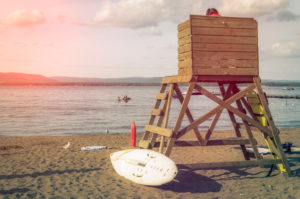Save Your Skin
 After a long and snowy winter the sun has finally made an appearance! If you are anything like me that means you are ready to hit the beach and spend a lot more time outdoors. More time soaking up rays makes it even more important to be smart in the sun.
After a long and snowy winter the sun has finally made an appearance! If you are anything like me that means you are ready to hit the beach and spend a lot more time outdoors. More time soaking up rays makes it even more important to be smart in the sun.
It may surprise you that getting too much sun can not only lead to the pain of a sunburn but can also cause wrinkles and even skin cancer. The good news is that protecting yourself is super easy!
First and most importantly, wear sunscreen – You should wear sunscreen on exposed skin every day, not just when you are at the beach. Everyone needs sunscreen regardless of your skin color or type. Sunscreen should even be worn on cloudy days since 80% of the harmful rays still get through. Look for sunscreens that protect against both types of dangerous sunrays (UVA and UVB) and are at least SPF-30. Ideally pick a sunscreen that is water resistant. However, keep in mind that no sunscreen is waterproof and you need to reapply every two hours when outdoors and especially after swimming or sweating heavily.
Seek the shade – The sun is strongest between 10am and 3pm so this can be a great time of day to seek out activities that will keep you out of the sun. Don’t forget to also protect your eyes and head with hats and sunglasses.
Be careful near water and sand – They reflect the damaging rays of the sun, which can increase your chance of sunburn.
Avoid tanning beds – Some people see the tanning bed as a quick way to get a golden glow. In fact tanning beds have been popping up everywhere from gyms to beauty salons. Don’t be fooled. They expose you to high levels of the same dangerous rays and cause cancer. Some people argue they are just using the tanning bed for a “base tan” to prevent sunburn in the future. The truth is there is no evidence that a base tan will prevent sunburns. If you must have some extra glow opt instead for a self-tanner used with sunscreen.
With a little planning you can “save your skin”, avoid painful sunburn, wrinkles, and even skin cancer and still have a fun and sun safe summer!
For more tips check out our sun safety and vitamin D health guides.
– Shannon

